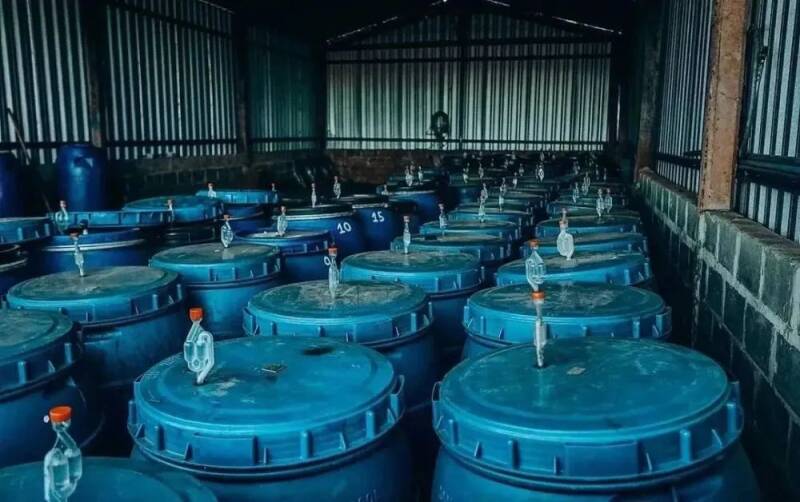Why are there more and more coffee processing methods nowadays? How is the anaerobic treatment method named?
The treatment of coffee refers to the process of turning coffee fruit into coffee beans, at the same time, it also affects the trend of coffee flavor. In recent years, with the popularity of coffee culture, not only the audience of coffee is increasing, but the way of handling coffee beans is also increasing day by day! From the original handful to the present multifarious, and the name of the treatment is getting longer and longer. People can't help but wonder why coffee processing is becoming more and more complicated.

In fact, the reason why coffee treatment is becoming more and more complex is to open up more possibilities for coffee flavor. What do you mean? The purpose is to make the coffee have a more special flavor, so as to meet the different taste needs of consumers. At the same time, it also represents a change in the purpose of handling coffee. Because at the beginning, the increase in treatment is only to adapt to the climatic environment of the producing area and to increase the processing efficiency of coffee beans. Before the 18th century, coffee was treated only by the sun, which dried the coffee fruit through long periods of sunshine. It was not until the beginning of the 18th century that washing treatment, honey treatment and wet planing appeared one after another. Although we can now directly tell the different feelings between these treatments, they were not invented to distinguish them from sun-dried coffee beans.
Take washing treatment, for example, it was born in the early 18th century in the West Indies of the Caribbean, that is, Indonesia. Due to the humid and rainy climate in Indonesia, unlike other popular coffee producing areas at that time, there was a long period of sunshine throughout the day. As a result, they cannot use the sun to treat coffee fruits. Because if the coffee fruit is treated in the sun in a humid environment, it will take longer to dry because of the lack of sunshine time. But during this period, many coffee fruits are prone to mildew because they are not dry for a long time. So the washing treatment was born! By first peeling, meat and glue, and then drying. This not only reduces the drying time of coffee beans by about half, but also provides a high degree of cleanliness for coffee. Later, in order to compress the drying time, the wet planing method appeared again. Half-sun in Brazil and honey treatment in Central America are also the result of local conditions.
As people became more and more precise about coffee, it was found that the way coffee beans were handled would change the taste of coffee. This is mainly due to the different substances involved in fermentation and the results of different degrees of fermentation. So when people discovered this, the treatment began to develop towards diversification and style. For example, honey treatment, the current honey treatment has black, red, yellow, white honey and other different treatment methods. They will change the fermentation time and the final taste of coffee due to the different amount of substances involved in fermentation (different pectin content). Later, some estates in Colombia have found that coffee beans can produce completely different flavors if they are fermented in different environments. As a result, the treatment of anaerobic treatment began to be applied to coffee. In 14 years, after an anaerobic coffee bean entered the list of winners in Costa Rica, the wave of anaerobic fermentation began to roll up the storm!
More and more coffee farms begin to study the treatment of anaerobic fermentation, but because of the high complexity of the process, anaerobic time, anaerobic ambient temperature, anaerobic colony, PH value and so on need to be strictly controlled. Each step will lead to the development of coffee beans to unexpected flavor, so each manor basically has its own set of anaerobic treatment formula. However, in order to highlight the selling point and distinguish it from the anaerobic treatment of other manors, some manors will make corresponding modifications on the treatment names. For example, some estates use anaerobic time as the selling point, so it will add time to the name of the treatment, or some estates will be distinguished by the anaerobic temperature environment. so the name of the treatment method will appear on the name such as "low temperature slow anaerobic"! special treatment names such as "thermal shock" and "cold shock" are the same.
Another aspect is that the current treatment seems very complicated, that is, the naming of the original coffee treatment is not too particular. For example, the same water washing treatment, but Ethiopia's water washing treatment will be very different from Kenya's water washing treatment, both in terms of process and fermentation time! This leads to a completely different taste in the end, but, uh, the logo is unified as washing. So you can understand why coffee treatment has become more and more complicated since the development of coffee treatment. On the one hand, it is to make coffee flavor more possible, on the other hand, it is to pay attention to the traceability information of coffee beans.
-END-
Important Notice :
前街咖啡 FrontStreet Coffee has moved to new addredd:
FrontStreet Coffee Address: 315,Donghua East Road,GuangZhou
Tel:020 38364473
- Prev

Does yogurt become an "aphrodisiac"? The advertisement is suspected of being edging
▲ Click to pay attention| Daily Boutique Coffee Culture Magazine Coffee Workshop Recently, yogurt brand Blueglass launched a series of products called "Superboy Boyfriend Power Repairs." According to official publicity, this series has added drinks such as cistanche, Polygonatum, ginseng, deer penis, oyster peptide, etc.
- Next

With concentrated and hand-brewed coffee, what is red-eye coffee? How to make black eye coffee? What is the difference between it and American?
Recently, while Qianjie was surfing the Internet, he discovered a special espresso that is popular in North America: red-eye coffee. Like most espresso, it is made by adding other substances to espresso! The difference is that the object of fusion with espresso is still coffee! and still "
Related
- Being chased out of the rain in front of Starbucks?! Store: Sheltering from rain under umbrellas poses a safety hazard
- The white moonlight has changed?! Lucky launches "Big Winter Pear American"
- Hand-brewed coffee three-stage method, high-sweet and universal brewing method to share! What does the high sweet water level of hand-brewed coffee mean?
- What is the difference between raw, refined and full espresso coffee? How to extract espresso and taste good?
- A complete list of coffee bean names and their meanings! What is Yejia Shefi coffee? Where is Mantelin coffee?
- What grade does Arida Manor Kaduai coffee beans belong to? What treatment is Arida ASD slow anaerobic sun exposure?
- The milk tea cup becomes smaller?! Overlord Tea Girl launches a new "Return to Yunnan" series
- Accused of selling counterfeit and high-priced coffee beans! Well-known boutique coffee brand "Oukelao" bowed and apologized!
- How to make espresso dumplings? Can I eat coffee and glutinous rice balls together?
- Save the unformed and stagnant powder cakes in one second! What is the problem with stagnant water in the powder bowl of the espresso machine?

